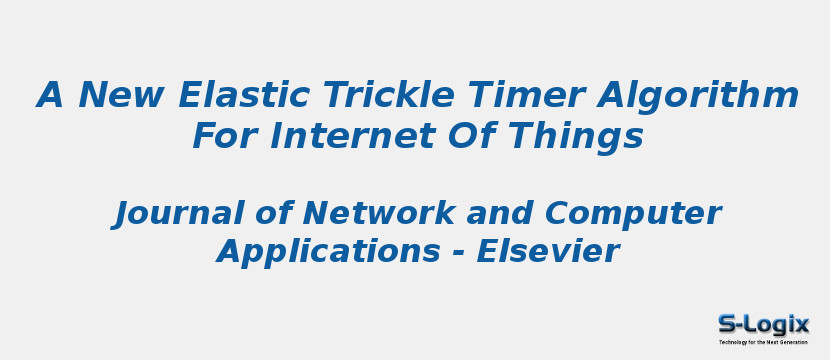Research Area: Internet of Things
The term IoT emerging services is used to refer to the modern kinds of services that IoT can provide to enhance service and experience quality by reducing complexity, speeding up requests, and using techniques involved with cloud, Big Data, and protocols to allows services to function seamlessly. Therefore, IoT utilises protocols found within different network layers. RPL or Routing Protocol for Low Power and Lossy Networks is one of the most important routing protocols utilised on the network layer. This protocol is considered an IPV6 distance vector proactive routing protocol. The trickle timer algorithm is one of its major components. This algorithm is used to control and track the control messages’ flow throughout the network. However, one weakness of the trickle algorithm is that it suffers from short listen problem that makes some nodes starve for delay and long latency in propagating transmissions. Based on existing literature, there have been several research studies on this trickle method. Development of the Enhanced Trickle algorithm (E-Trickle) was done to get rid of the listen only period. However, there still is relatively low activity on studying the trickle algorithm’s performance merits. Our proposed elastic trickle timer algorithm will try to fill this gap by dealing only with the listen to only period problems. The power consumption and convergence time are mainly affected. Therefore, our proposed algorithm was incorporated in the Routing Protocol for Low Power and Lossy Networks (RPL). Different network densities were used to evaluate the simulation experiments. Its implementation was done on 20, 40, 60, and 80 nodes using different ratios for reception success (RX) (20%, 40%, 60%, 80%, and 100%), and grid network and random topologies were used. The Cooja 2.7 simulator was used to implement the simulation experiments, and RPL performance was studied through the elastic trickle timer algorithm. Measurement of the simulation experiments was done on various performance metrics such as packet delivery ratio (PDR), convergence time, and power consumption. Comparison of the results was done using the standard trickle timer algorithm. Using random and grid topologies, the results revealed greater enhancements in terms of convergence time. Simulation results revealed that when the network was made up of 20 nodes, there was 35% less convergence time. Moreover, when 40 nodes were randomly placed, there was 62% less convergence time, and 71% less convergence time when 40 nodes were situated in a grid topology. Additionally, there was 70% less convergence time when the network was made up of 60 nodes and approximately 76% less convergence time when there were 80 nodes. Moreover, the simulation results revealed that in terms of energy consumption, the new algorithm exhibited superior performance characteristics.
Keywords:
Author(s) Name: Yassein, Muneer Bani, and Shadi Aljawarneh.
Journal name: Journal of Network and Computer Applications
Conferrence name:
Publisher name: ELSEVIER
DOI: 10.1016/j.jnca.2017.01.024
Volume Information: Volume 89, 1 July 2017
